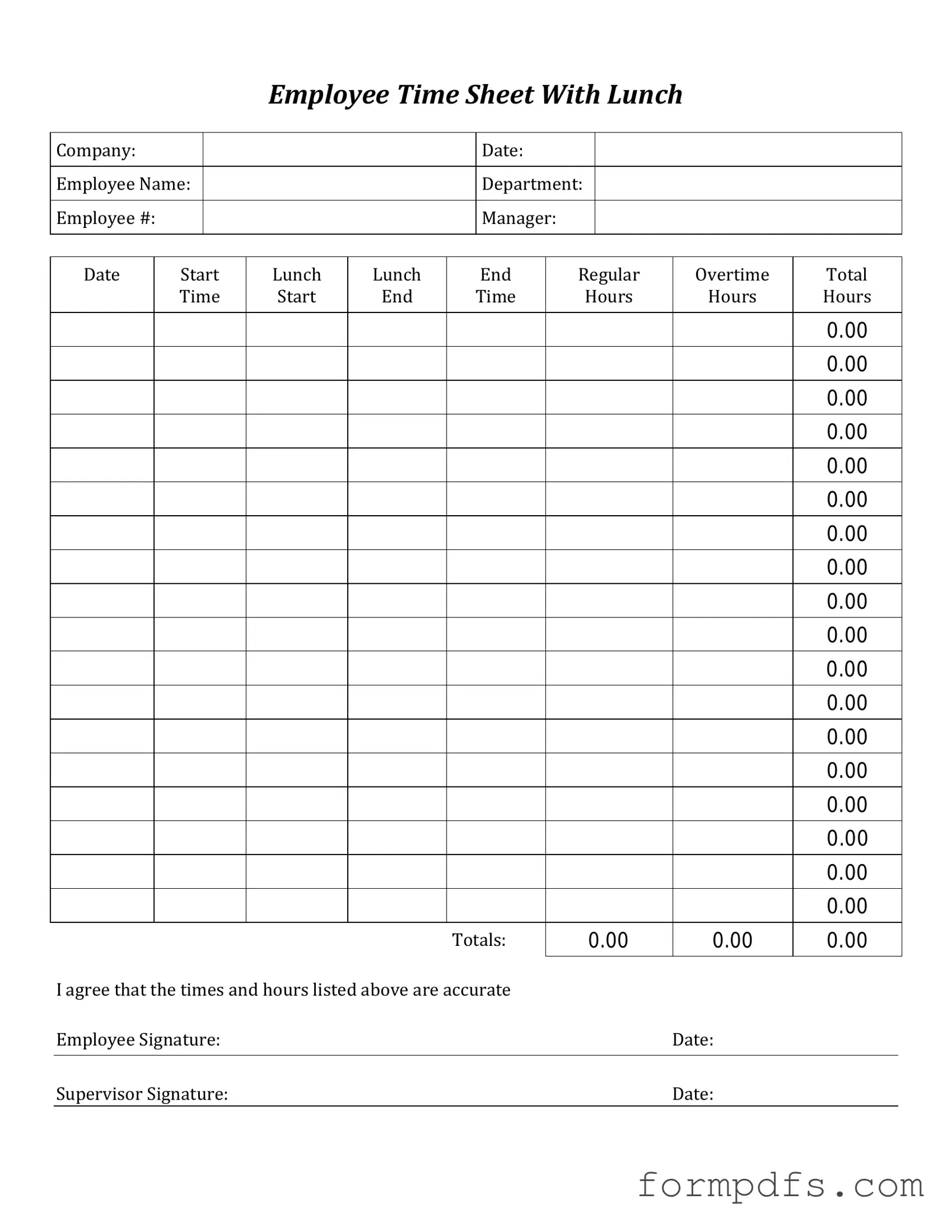What is a Time Card form?
A Time Card form is a document used to track the hours worked by an employee during a specific pay period. It helps both employees and employers keep accurate records of work hours, including regular time, overtime, and any time off. This form is essential for ensuring that employees are paid correctly and on time.
How do I fill out the Time Card form?
To fill out the Time Card form, start by entering your name and employee ID at the top. Then, record the date for each day you worked. For each day, note the start and end times of your shift. Be sure to include any breaks taken. At the end of the pay period, total your hours worked, including any overtime. Finally, sign and date the form to confirm its accuracy.
What should I do if I make a mistake on my Time Card?
If you notice a mistake on your Time Card, correct it as soon as possible. Cross out the incorrect entry neatly and write the correct information next to it. If the form has already been submitted, inform your supervisor immediately. They can guide you on how to adjust your hours and ensure you receive the correct pay.
When is the Time Card form due?
The due date for submitting your Time Card form typically aligns with your company’s payroll schedule. It’s essential to check with your supervisor or HR department for specific deadlines. Submitting your form on time ensures that you receive your paycheck without delays.
What happens if I forget to submit my Time Card?
If you forget to submit your Time Card, it can lead to delays in your paycheck. It’s important to notify your supervisor as soon as possible. They may allow you to submit a late Time Card, but policies can vary by company. To avoid this situation in the future, set reminders for yourself before the due date.
